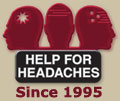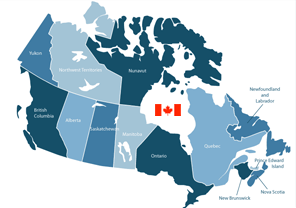Stress and Headache
Dr. Werner Becker on the link between Migraine and Stress
Migraine and stress are strongly linked. Indeed, anxiety, excitement and any form of tension and shock may all lead to a migraine attack. However, some people report that their migraine attacks start when the stress reduces. This is sometimes experienced as "weekend headaches" when, after a busy and stressful week at work, an individual might experience a migraine at the weekend when they are more relaxed.
Stress as a Headache Aggravator/Trigger
A recent study of 366 migraine patients who kept daily diaries for 3 months, documenting life events and headaches indicated that stress was a factor preceding migraines for 42% of the patients. For comparison, the most prevalent trigger or aggravator was sleep disturbance/fatigue (80%). Food and drink sensitivities were identified by 36%. 35% identified weather changes as a trigger, and 32% of women noted menstrual correlation. A separate study followed 100 consecutive children and adolescents with headache who were seen in primary care medical practices. "Tension" was identified as "always a trigger or aggravator" by 68%, and was more prevalent than other common migraine triggers such as bright lights (51%), loud noises (40%), and missed meals (29%). 2
The above section was authored by Dr. Alvin Lake III of The Michigan Headache & Neurological Institute (MHNI) in Ann Arbor, Michigan. Dr. Lake is the senior behavioural psychologist and director of the Behavioural Medicine Division at MHNI.
Read the entire article HERETo schedule an appointment or to speak to the MHNI triage nurse click here. Be prepared to incur out-of-pocket expenses.
What can be done about it?
Behavioural sleep changes can promote restful, regular sleep and reduce headache. Simple changes like establishing consistent sleep and wake-up times, as well as getting between 7 and 8 hours of sleep a day, can make a world of difference. Experts also recommend avoiding substances that impair sleep, like caffeine, nicotine and alcohol, and also suggest winding down before bed to prevent sleep problems. 3
Sleep and Headache
Common sleep problems that migraine sufferers experience
Insomnia
The most common sleep problem for people living with migraine is insomnia. This includes difficulty falling or staying asleep, early morning awakenings and non-refreshing sleep. Insomnia impairs daytime functions, which results in fatigue, poor attention and concentration, and loss of motivation. In many cases, insomnia may stem from other chronic pain conditions, which makes it difficult to sleep comfortably and can disrupt normal sleeping patterns. For example, sleeping off a migraine attack in the day might delay your bedtime and throw your schedule off. 4
In a recent study of over 200 people living with migraine, over 85% reported clinically significant poor sleep quality, which is associated with headache frequency, depression, and anxiety. - Dr. Bert Varga, Mayo Clinic, Scottsdale, Arizona -
Sleep Apnea (includes snoring)
One of the most common reasons people struggle with obtaining a good night's sleep is because of a common sleep disorder called Obstructive Sleep Apnea (OSA).
OSA occurs when the base of the tongue and the uvula relax and sag, causing the airway to collapse and sometimes close completely. While the airway is obstructed, loud snoring is present. However, when the snoring stops or pauses, the sleeper has stopped breathing entirely. The lack of oxygen causes him or her to wake and gasp for breath. This cycle may be repeated hundreds of times per night.
Obstructive Sleep Apnea (OSA) occurs when air is blocked from entering the lungs during sleep. For air to get to the lungs it must first go through the "upper airway" (airway). The airway includes the nose, mouth and parts of the mouth behind the tongue that cannot be seen without special instruments.
The airway is similar to a tube, and some parts have the tendency to collapse. The area behind the tongue in the diagram (when you click the link) shows a common site of collapse. When it occurs behind the tongue air cannot get from the nose or mouth into the lungs. To prevent collapse, there are muscles in the airway that keep the airway open.
During the day these muscles work completely. However, when a person sleeps, these muscles relax. Normally the airway stays open even when the airway relaxes. In people with OSA, the airway collapses or is close to collapsing when the airway muscles relax. 5
Read the complete article (that includes diagram and treatment) from Dr. Joel Saper of the Michigan Headache and Neurological Institute in Ann Arbor, Michigan here.
Teeth Grinding (also known as bruxisam)
Waking up with a dull, constant headache or sore jaw can be a symptom of excessive teeth grinding, which can contribute to temporomandibular disorders. While many people grind or clench their teeth from time to time, frequent teeth grinding—known as bruxism—can harm the teeth and be symptomatic of excessive stress and poor sleep. 6
Simple behavioural changes that target stress reduction, or the use of a mouth guard (or occusal splint), can help prevent bruxism and the associated headache. 6
Will sleeping more make your headaches worse?
Either too much sleep or too little sleep can aggravate headaches in any individual. Researchers believe that fluctuations in serotonin and other brain neurotransmitters occur during sleep, which in turn can influence the onset or aggravation of head pain. When a person vulnerable to headache sleeps late on the weekend, beyond the time they usually awaken during the week, that extra amount of sleep may aggravate head pain. On the other hand, some patients discover that sleep is a relieving and therapeutic agent for their headache condition. Although some headache sufferers observe that napping can reduce headache pain (especially in adolescence), most adults find that daytime sleeping triggers headache. Also, frequent naps during the day may reduce sound sleep at night resulting in a morning headache. Patients should attempt to reserve daytime hours for activity and reserve night time hours for sleep. This approach, termed "sleep restriction" whereby an individual goes to bed and awakens at the same time each day, is an important component in managing headaches. 7
Types of Headaches linked to sleep
Wake-up Headache
The most common time for migraine to occur is in the early morning. People are vulnerable during the early morning because most over-the-counter and narcotic pain medications wear off in 4-8 hours, especially if they're overusing those medications. Furthermore, many people will be asleep when the headache begins to emerge, missing the best time to take migraine medicines and rendering them less effective. 8
Hypnic Headache
Hypnic Headache (HH) has also been called the 'alarm clock headache', due to its nocturnal ability to wake patients from sleep at roughly the same time. It is a headache characterized by short-lived headaches that occur exclusively during sleep, are generalized and may be severe. Some patients suffer for decades before a proper diagnosis is made. Initially, caffeine at bedtime is recommended; Indomethicin can also be tried. 9
Cluster Headache
A Cluster Headache (CH) is usually a one-sided type of headache that affects males over females by a ratio of 3:1. The pain attacks can be very severe. Attacks appear in "clusters", then often take a holiday. The pain is very often on the same side of the head. The pain sensation is often piercing in quality (like a red hot poker through the eyeball), quite intense, and may be associated with redness or watering of the eye and stuffiness of the nose. Direct oxygen by face mask (a prescription from a physician will be needed) can sometimes be used to abort this headache.
The chronic version is referred to as Chronic Cluster Headache. Cluster headaches can be an excruciating type of headache, and are sometimes refereed to as 'suicide headaches'. 10
The importance of healthy sleep
Behavioural sleep changes can promote restful, regular sleep and reduce headache. Simple changes like establishing consistent sleep and wake-up times, as well as getting between 7 and 8 hours of sleep a day, can make a world of difference. Experts also recommend avoiding substances that impair sleep, like caffeine, nicotine and alcohol, and also suggest winding down before bed to prevent sleep problems. To hear about how members of our community stick to healthy sleep habits. 11
...sleep disturbance and headache often occur together. Disturbed sleep may contribute to triggering an attack or the headache itself may disrupt sleep. Insomnia affects 1/3 of the population. - Migraine Canada -
Exercise and Headache
The therapeutic effects of exercise are well documented. Regular physical activity will improve your overall health and reduce the risk of developing diseases like high blood pressure, diabetes, depression and obesity. Benefits also include reducing stress, reducing cholesterol levels, improving the quality of sleep patterns and producing a feeling of wellbeing.
If you are prone to migraine you may have found that strenuous exercise can provoke an attack. This may have led you to avoid exercise as you have identified it as a trigger. If this is the case then you are missing out on the benefits that exercise can bring to your overall wellbeing..... 12
Reprinted with permission from The Migraine Trust, in the United Kingdom. Read the entire article here
Important facts about asthma and migraine
The relationship between migraine and asthma is equally confusing. Clearly, there is some overlap in the risk or triggering factors for asthma and migraine—for example, stress and certain environmental triggers or allergens. Often migraine sufferers with asthma report that both asthma and migraine can worsen at the same time, and occasionally one seems to lead to the other. In one study, patients with asthma were 1.5 times more likely to also have migraine. 13
Depression / Anxiety Strategy for Patients Who Have Depression and / or Anxiety in Addition to Migraine
Some medications can do both: reduce migraine frequency and help with depression and anxiety. Therefore, one medication can be sometimes used to treat both, and this may result in fewer side effects. Amitriptyline and venlafaxine can be used in this way. 14
Nortriptyline is an additional choice and usually has fewer side effects than amitriptyline, but less research has been done to prove whether or not it is effective in to reducing migraine frequency. Some patients may not be taking enough amitriptyline to have an effect on their migraines. 14
REFERENCES
- The Migraine Trust, Common Triggers, Migraine and Stress
- Michigan Headache & Neurological Institute, Stress as a Headache Aggravator/Trigger
- American Migraine Foundation, Sleep Disorders and Headache
- American Migraine Foundation, Insomnia
- Michigan Headache & Neurological Institute, Obstructive Sleep Apnea
- Graff-Radford, SB, DDS, Director, Bruxism
- Michigan Headache & Neurological Institute, Sleeping more
- American Migraine Foundation, Triggers, Wake-up headaches
- Becker, WJ Hypnic Headache, Help for Headaches website
- Becker, WJ Cluster Headache, Help for Headaches website
- American Migraine Foundation, How sleep disorders affect headache
- The Migraine Trust, Coping with Migraines, Exercise
- Cady, RK, Springfield, MO Asthma and Migraine
- Can J of Neurological Sciences, Depression/Anxiety for patients Navigating Toward Better Headache Care, pg 153

